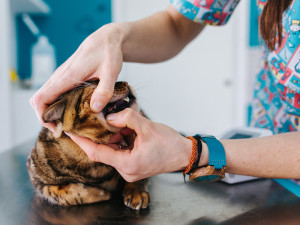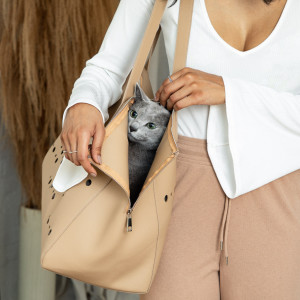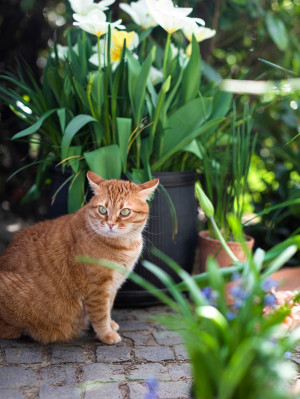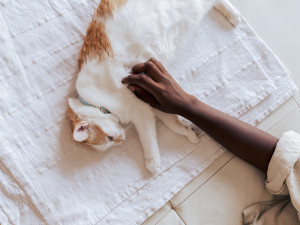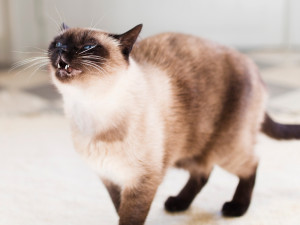Your Cat Is Limping. Now What?
When it’s no big deal and when you should worry
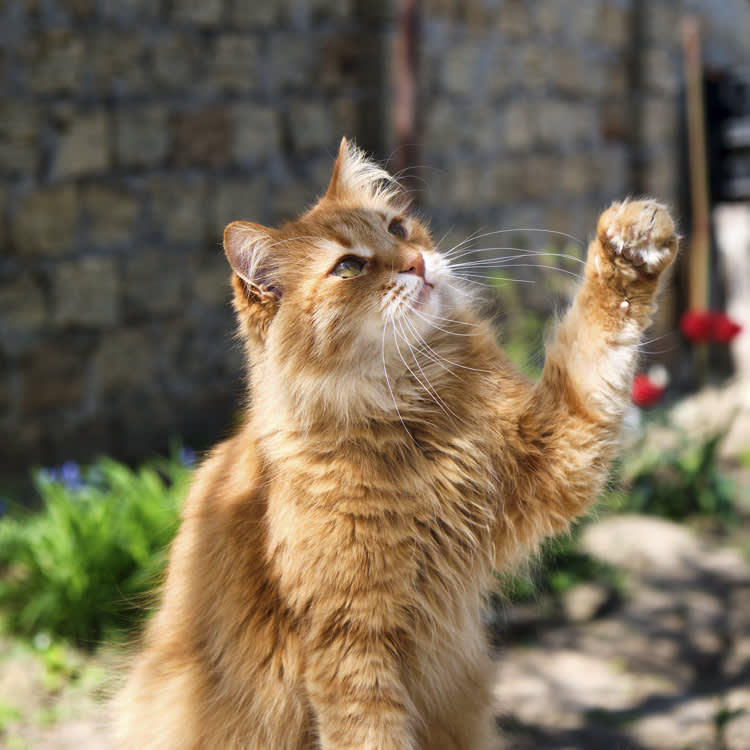
share article
One minute, your cat is their normal, nimble self – swatting stuff off tables, getting the zoomies, all the usual nonsense. The next, they’re limping. What happened in the few seconds you weren’t paying attention? Did they get on top of the fridge (not for the first time) and misjudge the landing? Is it as serious as a broken leg or are they being dramatic? The first thing you should do is call your veterinarian (we sound like a broken record, but they’re the professionals, after all). And, in the spirit of being proactive, we asked The Wildest collective expert member Dr John Iovinoopens in a new tab for tips in case this happens to you.
First steps when you notice your cat limping
Say you saw your cat fall from a height and they weren’t able to upright themself in time. In this instance, it’s no surprise when they can’t bear weight on one of their paws. You know the cause, so a little rest and relaxation should fix the issue relatively quickly and if the problem persists, you can explain the situation to your vet.
Noticing a limp without knowing the cause is always a little bit scary because you can’t determine the severity of the injury. While waiting for an appointment with your vet, you can try to assess what kind of injury your cat has (if they’ll let you). With a mild injury, you may see a very slight limp with no obvious signs of swellings or skin damage. As a rule of thumb: the more serious injuries have more severe physical symptoms.
What are the symptoms of a cat broken leg?
There are a few cat broken leg symptoms to be aware of. “With more severe injuries – a broken bone or a fracture – you will usually see a very bad limp,” says Dr Iovino. “The cat may not want to apply pressure at all to the leg. In addition, fractures will often cause a lot of swelling where the break is.” In these circumstances, you should act quickly; leaving a cat broken leg untreated can result in complications as severe as internal bleeding – not to mention more pain for your cat.
Many may assume that a limp is caused by an injury to muscle, bones or tendons, but that isn’t always the case. Infections or wounds can cause swelling and limping, which is why Dr Iovino always recommends checking for wounds on your cat’s paws and in between their toes.
Other causes and treatments for cat limps
If it’s not a jump gone wrong, your cat’s limp could be caused by a number of other things, including arthritis or joint issues, ingrown or broken nails, sore paw pads, bite wounds or canceropens in a new tab. Here are some ways to help care for your cat when you get to the root of the issue.
Arthritis
With old age comes the risk of arthritis, which can cause lameness or joint problems that are revealed in the form of a limp and/or a decrease in physical activity. Dr Iovino shares that cats, like dogs, can benefit from joint supplementation and prescription pain medication to help them as they age. Adding omega-3 fatty acids to their food can help reduce inflammation.
Nail issues
An ingrown nail can be hard to see, especially in breeds with long fur, but can cause significant pain. A trip to the vet, the removal of the nail and some pain medication is the best remedy.
Sore paw pads
Similarly, a walk on hot pavement can cause a lot of pain. Serious burns may require a trip to the vet, while smaller burns can be treated at home by keeping the area clean and dry, applying antibiotics and wrapping it in a bandage.
Wounds
Bites or outdoor injuries can be very painful. Dr Iovino advises that open wounds lead to infections and “infections can lead to pain, swelling and sometimes discharge. We usually want to have your local vet evaluate and clean any wounds and start with some antibiotics and pain management.”
Soft tissue injury
This is another tricky injury to diagnose. Typically, minor injuries to muscles heal well on their own with rest, but musculoskeletal-system injuries can take longer (two to three weeks).
Fractures
Breaks are common in cats who like to jump. Per Dr Iovino, casts or splints are typically required to help the healing process, something that can take anywhere from 8–12 weeks. “Some breaks are bad enough that they may need surgery to stabilise the damaged area for proper healing. In the initial stage of care, we will often use cat-specific pain medication, and this – along with stabilising – helps them heal better.”
Cancer
Certain neurological diseases can affect the way a cat walks. Your veterinarian will run tests to find out what is going on and will treat accordingly.
Aftercare
Regardless of what caused the limp, your cat will need to rest upon returning from the vet. As noted above, different ailments need differing lengths of healing time – which is easier said than done with cats who are typically always on the move.
If you have ever wondered if a cat can be crated, the answer is yes. Will they like it? Probably not. Dr Iovino advises using a crate opens in a new tab to keep cats “more stabilised and prevent further injury.” As long as you can fit a litter boxopens in a new tab, water and food bowls and give them a place to sleep, get up and turn easily, a crate can be the perfect place to heal. But it’s not always the right choice for every cat. “Some cats may panic or get anxiety in a crate situation, and this can cause more movement and further injury”.
If crating isn’t an option, you can still make a space that will keep them safe. Dr Iovino suggests using a small spare room for a more controlled environment and removing the temptation to jump by jump-proofing that space. “Adding padding, pillows or small ramps around the couch or bed where they seem to jump a lot can be important if they miss and fall.”
It is important to remember that a cat who limps is in pain. Initially, it may be hard to pinpoint exactly what caused the limp, but if you notice that it isn’t going away after a few hours, a trip to the vet is the best option.

Charlotte Brackett
Charlotte Brackett is a writer and content manager for the Pet Insight Projectopens in a new tab, which gathers data about dog behavior that may improve the lives of pets. She enjoys interviewing veterinarians and writing articles that help make dog ownership as easy and fun as possible. Charlotte earned a degree in journalism and English from the University of Richmond.
Related articles
![Siamese cat in the middle of sneeze]() opens in a new tab
opens in a new tabDid Your Cat Just Sneeze Like a Human? Here’s Why
Kitty sneezes can be alarming, but they’re not always cause for concern
![Ginger adult cat sits in flowering summer garden on pavement.]() opens in a new tab
opens in a new tabWhat to Do if Your Cat Gets Stung By a Bee
It’s not always as simple as scraping out the stinger. Find out everything you need to know
![A gray cat in a tan cat carrier]() opens in a new tab
opens in a new tabYour Cat Doesn’t Have to Hate Their Carrier
A behaviourist’s six surefire steps to training a cat to go in a carrier
![Maine coon cat using the litter box.]() opens in a new tab
opens in a new tabUncovered Secrets: Why Cats Don’t Always Cover Their Poo
And how you can encourage them to cover up after doing their business
